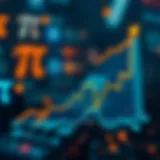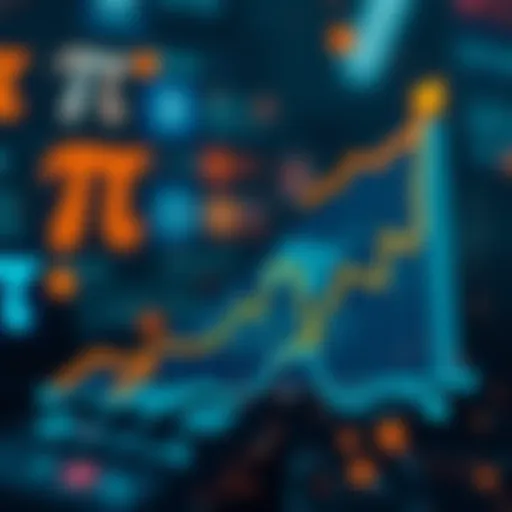Creating Generative NFTs: A Complete Guide
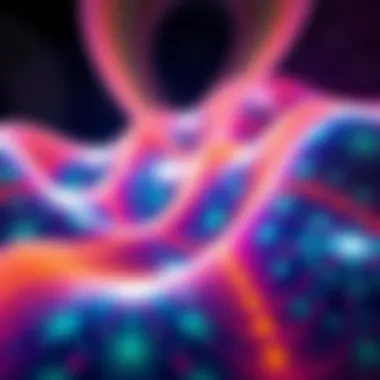

Intro
As the cryptocurrency landscape continually evolves, so does the realm of digital art, particularly with the emergence of generative NFTs. This innovative confluence not only reshapes how we view ownership and creativity but also delineates new frontiers for artists and collectors alike. Generative art utilizes algorithmic processes to create unique works that can vary infinitely, making each piece a one-of-a-kind treasure.
In this guide, we will delve into several facets of creating generative NFTs, covering the foundations of generative art, the tools needed for creation, and the masrketing strategies that can help both established and emerging artists navigate this digital canvas. Our exploration will also extend to the implications for the wider cryptocurrency market and how these pieces fit within that evolving space.
We’ll begin with a look at current trends in the cryptocurrency sector, laying the groundwork to understand the context in which generative NFTs thrive. From there, we will dissect investment strategies tailored specifically for the crypto arts, equipping both traders and enthusiasts with essential insights to make informed decisions.
The interconnection of creativity, technology, and finance is complex, yet it offers unprecedented opportunities. Each section will build upon the last, ensuring a comprehensive understanding for our discerning audience. Let’s embark on this journey through the intricate world of generative NFTs, where art meets algorithm in a dynamic digital age.
Trends in Cryptocurrency
Understanding the current state of cryptocurrency is vital for any creator wishing to make an impact in the NFT space. The dynamics at play can influence not only the creation of generative NFTs but also their marketability.
Current Market Trends
The popularity of NFTs surged dramatically in recent years, capturing the attention of collectors and investors worldwide. As traditional markets display volatility, digital assets offer an alternative platform for investment. Among these, generative NFTs stand out due to their innovative nature and rarity. The idea that art can be created from code is not just groundbreaking; it provides an endless array of possibilities for artists.
Understanding Generative Art
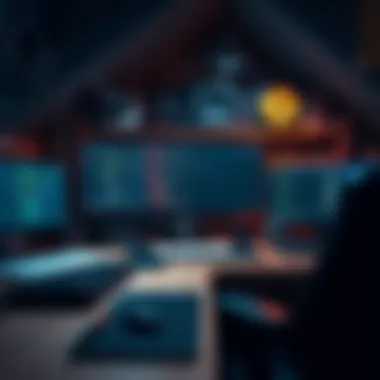

Understanding generative art is crucial when it comes to creating generative NFTs. The concept of generative art merges technology, creativity, and algorithms, leading to artworks that evolve through computational processes rather than traditional manual methods. This tells us not only about the nature of art today but also shapes the future of digital creativity. The creation of generative NFTs represents a blending of art and technology that is fast gaining traction among artists and collectors alike.
One key benefit of grasping the principles behind generative art is that it opens doors to new methodologies and aesthetics. Artists can experiment freely, creating works that might be impossible to achieve using traditional techniques. The importance of algorithms and randomness brings an unprecedented level of dynamism and variation, making each generated piece unique.
Moreover, our understanding of generative art encourages a re-examination of ownership and copyright issues in the digital realm. As artists generate works through code, they begin to question how value is assigned in the digital landscape. This intersection of art and technology not only affects creators but also influences collectors and traders by changing how they interact with their assets, both economically and emotionally.
Developing a strong foundation in generative art empowers artists to define their voice within the NFT space, enhancing their visibility and credibility in a saturated market. By acknowledging the transformative power of this art form, creators and collectors can navigate the intricate dance of innovation and valuation in a complex digital ecosystem.
Defining Generative Art
Generative art refers to artworks created with the help of autonomous systems. In its essence, an artist designs a set of rules, algorithms, or procedures, which then produce visual representations or sound outputs. By employing randomness and predefined variables, the artist collaborates with the machine, allowing for a dialogue between code and creativity. This art form can take many shapes - from 2D images and animations to complex 3D sculptures.
Through code, artists may evoke emotion, provoke thought, or even question the very nature of creativity itself. Generative art stands out because it often pushes the boundaries of what we typically consider "art." The outcome is usually unpredictable, and that unpredictability lies at its core. Generative works can be seen just like music compositions or mathematical formulas that end up through an intricate process. Each iteration is distinct, thus enhancing their value in a world increasingly enamored with uniqueness.
Historical Context
The roots of generative art can be traced back to the mid-20th century when artists first began to embrace technology as a tool for creativity. Early pioneers such as Frieder Nake, Harold Cohen, and Vera Molnar laid the groundwork by employing computers to create visually intriguing pieces. These artists experimented with programming languages, producing works that integrated mathematical algorithms into the art-making process.
As digital technology evolved, so did the ways artists approached generative art. The introduction of computer graphics in the 1970s led to the rise of visual art forms that utilized systematic and algorithmic methodologies. Fast forward to today, the rise of generative NFTs reveals just how far this field has come, coupled with a booming interest in digital ownership through blockchain technology.
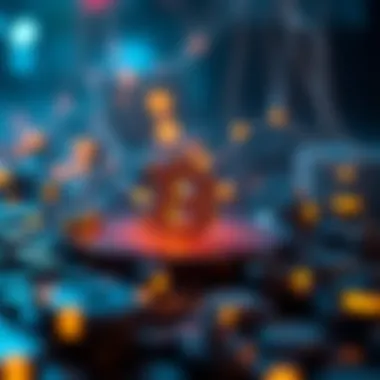

In a historical context, the development of generative art serves as a bridge between traditional artistic practices and digital technology, which reshapes our understanding of art's role in society. As we continue to embrace advancements in technology, the context of generative art provides valuable insight into the future of creative expression.
The Basics of NFTs
Understanding the foundation of NFTs is crucial for anyone venturing into the realm of generative art. NFTs, or Non-Fungible Tokens, revolutionize how we conceive ownership and value in the digital age. Immaterial representations gain tangible significance through blockchain technology, bestowing authenticity and scarcity on digital creations. This section serves as a stepping stone to grasp the complexity of generative NFTs, where technology meets creativity.
What Are NFTs?
Non-Fungible Tokens (NFTs) are unique digital assets verified using blockchain technology. Unlike cryptocurrencies like Bitcoin or Ethereum, which are interchangeable and fungible, NFTs are one-of-a-kind, each possessing distinct information or attributes. This uniqueness empowers artists and creators, as they can tokenize their work, granting it provenance and market value. Think of it as a signature, an identifier that distinguishes one piece from another. In practical terms, when you purchase an NFT, you aren’t just buying an image or video; you are acquiring ownership of the digital file along with its embedded metadata that records its history and authentication.
Art has historically faced challenges regarding copyright and ownership. NFTs provide a solution by embedding terms of use and ownership rights into the token itself. This facilitates clear accountability and establishes a framework for artists to receive royalties on secondary sales.
Here’s a breakdown:
- Unique Digital Asset: Each NFT is distinct, with no two NFTs being the same. This singularity adds to the appeal for collectors and investors.
- Blockchain Verification: Each token is housed on a blockchain, creating a decentralized ledger that records transactions and ownership history, hence improving security.
- Smart Contracts: These programmable scripts enforce rules automatically when certain conditions are met, streamlining transactions and protecting creators' interests.
Thus, NFTs stand as a bridge transforming digital art into a collectable asset.
Unique Characteristics of NFTs


NFTs bring a set of characteristics that distinguish them in the digital landscape:
- Indivisibility: Unlike cryptocurrencies, NFTs cannot be divided. You either own the entire token or none of it.
- Scarcity: Artists can limit the creation of NFTs, providing a sense of rarity that appeals to collectors. Much like limited edition prints, scarcity drives demand.
- Interoperability: Many NFTs can be created to function across different platforms, nurturing an interconnected digital economy. For example, an NFT created for a popular video game can also be used in a virtual world.
- Transferability: Ownership of NFTs can be transferred seamlessly through digital wallets, making it easy for trading and selling.
"NFTs represent a new way of thinking about ownership and value in the digital world."
While the novelty of NFTs can spark excitement, it also requires a thorough understanding of the technology and market they inhabit. As the ecosystem evolves, knowing these nuances becomes pivotal for artists eager to explore generative NFTs. The characteristics discussed set the stage for deeper dives into technologies and strategies tailored for creating and marketing these unique digital assets.
Exploring Generative NFT Technology
As we traverse into the realm of generative NFTs, it becomes evident that this is not just a passing trend but a paradigm shift in the art and technology sectors. By understanding the nuances of these technologies, artists and collectors alike can glean insights that foster creativity and profitability. The interplay between algorithms, code, and art creates a vibrant tapestry where innovation meets expression.
Algorithms and Code in Generative Art
Algorithms are the lifeblood of generative art. They act as the set of instructions that dictate how art is created through computer-generated processes. At their core, these algorithms can range from simple rules that draw shapes and colors to complex computations that simulate natural phenomena like the growth of trees or the patterns of ocean waves. This capability allows for the generation of unique pieces that can be vast in variety yet follow a particular aesthetic trajectory.
Consider a simple algorithm designed to create generative landscapes. Using a combination of randomness and predefined rules, the code can produce never-before-seen visual representations—each iteration yielding a different result. Here’s a simplified version of what such an algorithm might look like:
python import random
Generate random points for a landscape
points = [(random.randint(0, 100), random.randint(0, 100)) for _ in range(10)] print(points)






